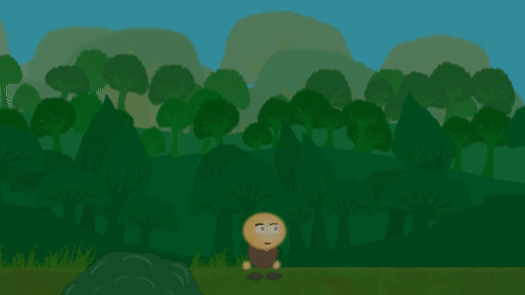Making Grass Fun(ish)
Videogames are interactive - whether it's a character reacting to user input or an epic RPG ending in wildly different ways based on player choices, it's all consequences of interaction. But while implementing fancy dialogue trees, adaptive story design and other interactive goodness, it's important not to forget that it's often the smallest interactive elements that makes the biggest difference - they can make or break our subconscious perception of the game's feel and overall quality.
Today's example - grass. When you're standing on a hilltop overlooking the realm in your favorite game, there's nothing quite as good for immersion as seeing all those tall blades of grass slowly swaying in the wind. At the same time, there's also nothing quite as bad for that same immersion as crouching through those tall blades of grass and literally nothing happens - making you feel more like a ghost than the grand adventurer you're supposed to be. And I get it - reactive foliage can be quite demanding, as I discovered when I implemented it. But I wanted it in Ronn For Your Life - so here are my challenges and solutions in the implementation.
First, let's take a look at what it looked like before:

While overhauling everything, it was clear that the grass pictured above was just one of many things that had to go. I wanted something that looked more natural, gave me greater control of programmatical influence (like changing wind forces), was lighter in terms of performance, and most importantly had the ability to be interacted with by external forces beyond wind - like a character walking through it, bending to its movements.
More...
You've Been Struck By... A Smooth Camera
A very fundamental, yet huge part of most games is moving around a world that is typically too big to fit into one screensize, and as such, the game needs a camera to follow the player. The simple solution is to do just that - make it follow the player character as soon as he or she moves. However, this isn't necessarily the most smooth or elegant solution. And since it's such a fundamental part of the game, let's see if we can do something to make it just a tiny bit nicer, should we?
This is how the camera movement used to look in Ronn For Your Life:

And this is how it looks now:
More...
Almost all games has some sort of task that happens several types throughout the game, which, if used too much or not designed carefully, can end up feeling repetitive or mundane. This can be just about anything that is iterated again and again throughout a game; but one common culprit of this is combat. So today, we'll talk about how we can try to remove mundanity... of death. But bear in mind, this can be applied to just about everything.
So, throughout most games with combat, including Ronn For Your Life, the player will encounter numerous enemies every now and then. These can be anything from small annoying mob-types to big bosses. Obviously, in most cases, the majority of space is taken up by a small army of the lesser enemies - in some ways to make the contrast of the big bad boss even more impactful. This isn't necessarily a bad thing, because it gives the player something to do, and if done right, it's fun and doesn't end up feeling grindy.
However, a common pitfall with fighting these small enemies is that it can very quickly end up feeling pointless, grindy, even mundane. Death should never be mundane. Combat should be exciting. Some games introduces loot as a reward for fighting off otherwise mundane enemies, which can make the grind feel more tolerable when you finally find that awesome Long Sword of Bloody Ogre Decapitation +3. However, at least so far, I have no plans to introduce loot (at least of that kind) into Ronn For Your Life.
So what do I do?
More...